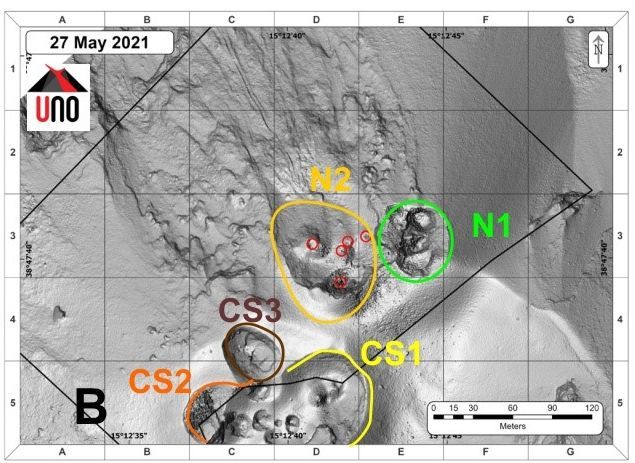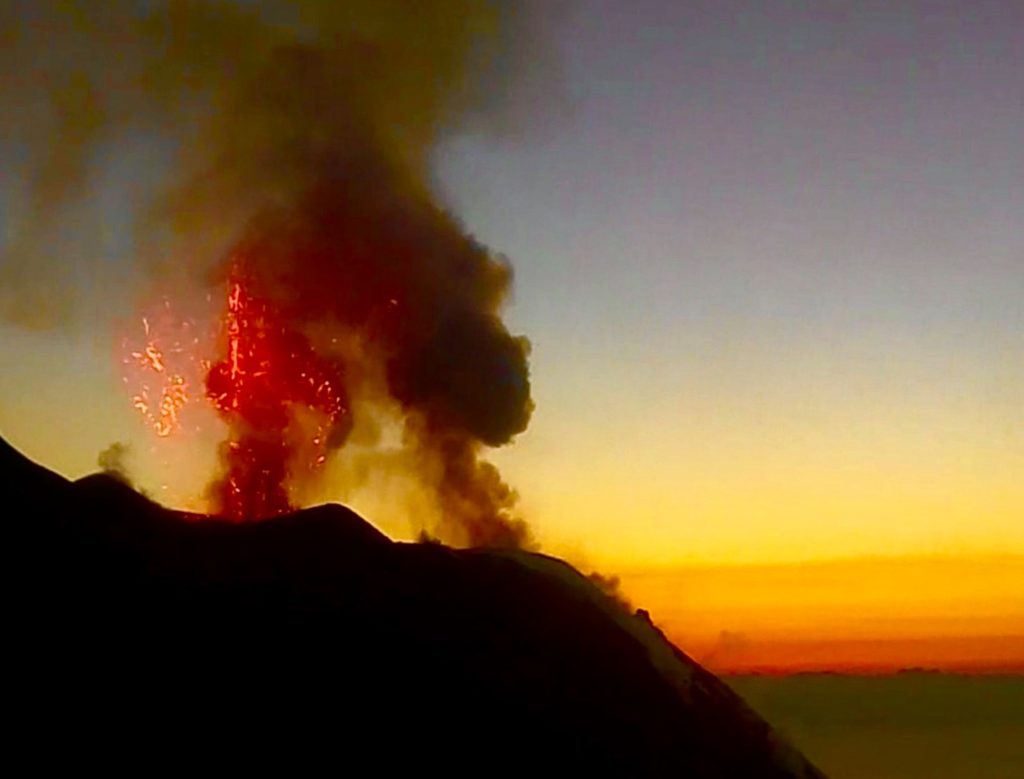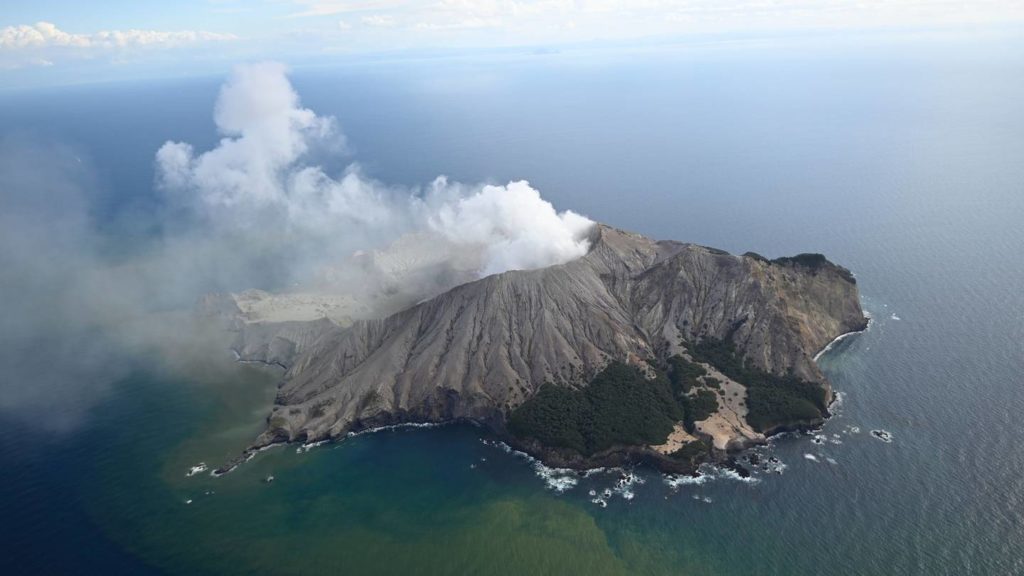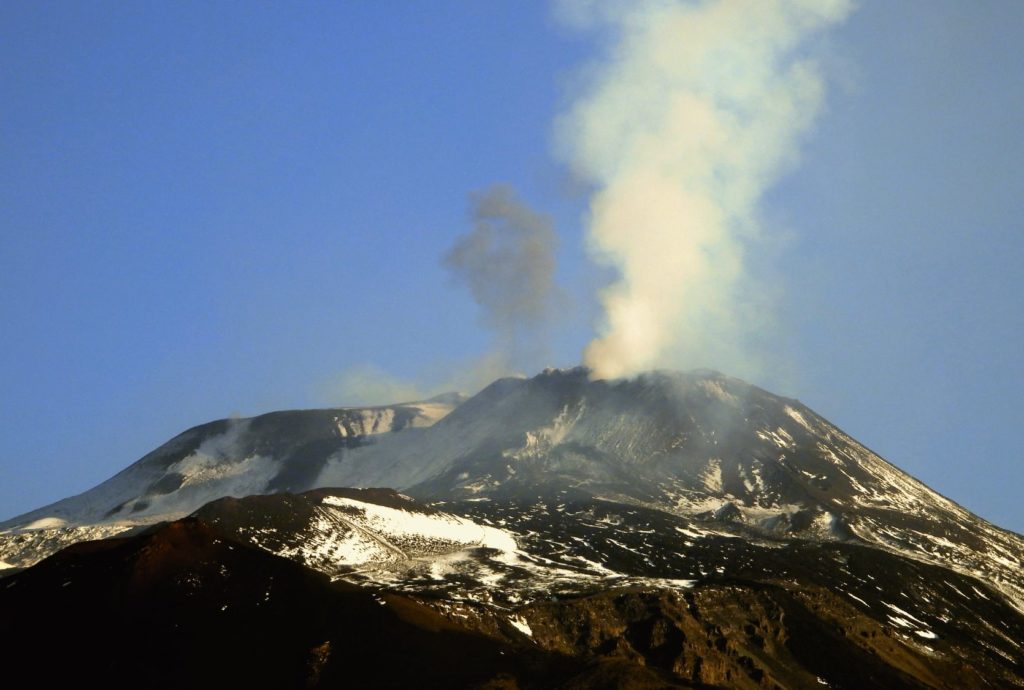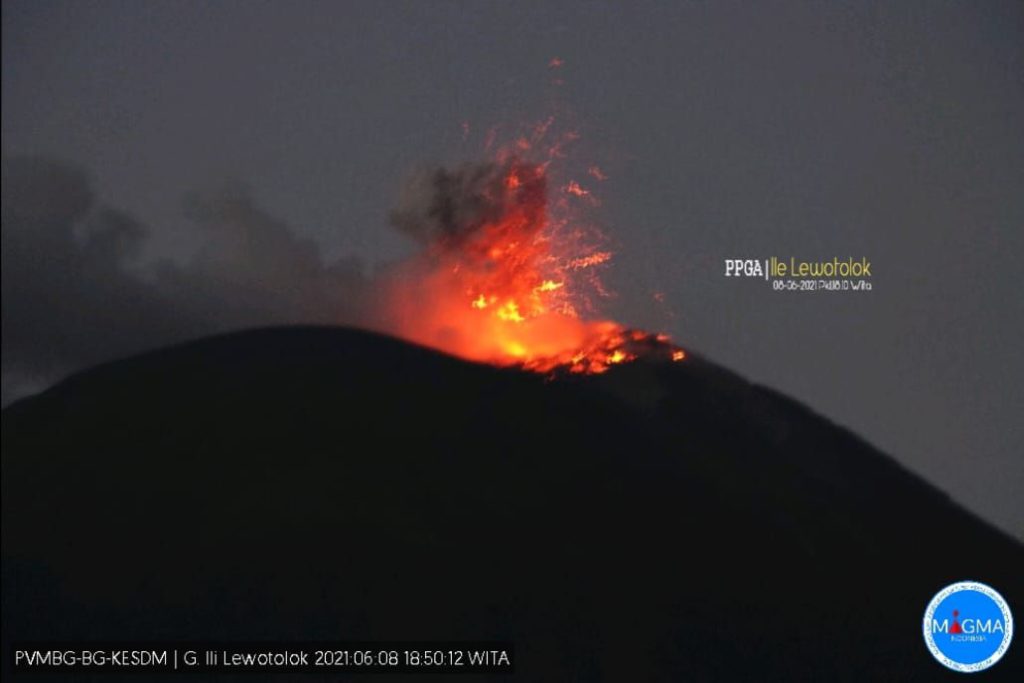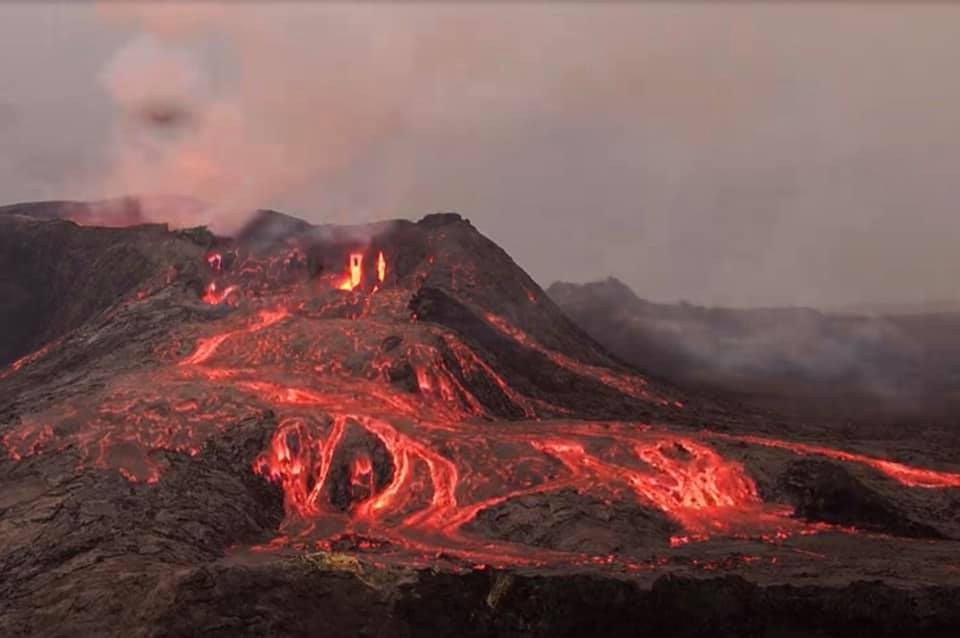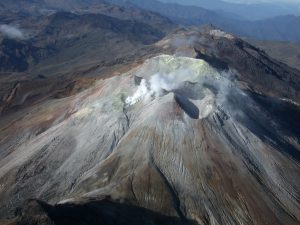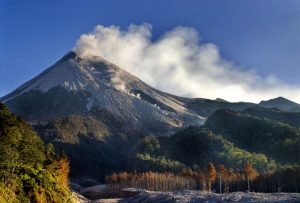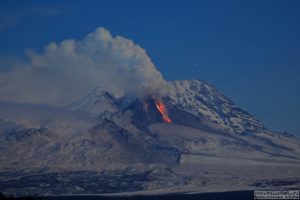June 11 , 2021.
Italy , Stromboli :
Weekly Bulletin from May 31, 2021 to June 06, 2021, (issue date June 08, 2021)
SUMMARY STATEMENT OF ACTIVITY
In view of the monitoring data, it is highlighted:
1) VOLCANOLOGICAL OBSERVATIONS: Normal explosive volcanic activity of Strombolian type accompanied by splashing activity which is sometimes intense in zone N2. The total frequency of events showed values between medium-low and medium-high levels (9-16 events / h) with the sole exception of June 4 with 21 events / h (high level). The intensity of the explosions varied from low to medium in the North crater area and medium-high in the Center-South area.
2) SEISMOLOGY: The monitored seismological parameters do not show significant changes, except for the increase in the amplitude of the tremor and some events of medium-high and high amplitude on days 01-02 / 06.
3) DEFORMATIONS: No significant change to report
4) GEOCHEMISTRY: SO2 flux at an average level
The C / S in the plume, although slightly increasing, is at average values.
The isotopic ratio of Helium dissolved in the thermal aquifer remains at an average level.
5) SATELLITE OBSERVATIONS: The thermal activity in the summit area is moderate to low.
VOLCANOLOGICAL OBSERVATIONS
In the observation period, the eruptive activity of Stromboli was characterized by analyzing the images recorded by the surveillance cameras INGV-OE located at an altitude of 190 m, in Punta Corvi and at an altitude of 400 m.
In the area of the north crater, the N1 crater, with two emission points, produced explosions of varying intensity, from low to medium (sometimes the products reached 150 m in height), emitting coarse matter (lapilli and bombs ) mixed with fine materials (ash). Vent N2, with four emission points, showed explosive activity of varying intensity, from low to medium-high (sometimes products reached 250m in height) emitting mostly coarse material with continuous throwing activity throughout. throughout the observed period which was intense during June 3-5. The average frequency of explosions varied from 6 to 16 events / h.
In the Center-South zone there were at least two emission points with explosions, emitting mainly fine materials, with medium and sometimes high intensity (the products exceeded 250 m in height).
The explosive activity showed average hourly frequency values between less than 1 and 5 events / h.
By the difference between the DEMs of 7 and 27 May processed within the framework of the activities of the UNO / INGV-DPC All project, the volume of lava emitted in the Sciara del Fuoco following the active lava flow between the 19 and the 24 May has been calculated. Analysis of the data indicates a volume of ~ 300,000 m3 (± 107,000 m3) corresponding to an effusion rate of ~ 0.6 m3 / s in accordance with data observed from May 20 thanks to satellite observations. However, it must be considered that the calculated volume is underestimated because it does not take into account the volume set up inside the North crater and the lava that poured out below sea level from the line of coast.
Source : INGV.
Photos : INGV , Webcam
New Zealand , White Island :
Minor volcanic unrest continues at Whakaari/White Island , Published: Wed Jun 9 2021 4:00 PM
Although a short-lived burst of seismic activity occurred on 1 June, volcanic activity at Whakaari/White Island remains at low levels. The Volcanic Alert Level remains at 1.
A brief period of enhanced low-energy volcanic tremor was recorded on 1 June at around 4 am, lasting two hours. During that period, no impulsive acoustic signals were recorded, unlike previous episodes that had a small explosive nature. This episode is not like periods of activity observed in mid-February, early-mid March, and late April, in that the activity levels this time did return more rapidly to typical low levels afterwards.
Web camera observations since 18 May indicate water has filled the vents in the 2019 Primary Crater and this was confirmed during an observation flight on 27 May. A lakelet now occupies the 2019 Primary Crater, and no ejected material is apparent about the crater. Several active steam and gas vents are now under water. Thermal infrared measurements from the observation flights also confirm the temperatures of the active vents are cooling significantly.
Gas and observation flights have confirmed the amount of gas being released from the volcano has not changed much over the last few months. The volcano continues to produce a weak-to-moderate gas and steam plume, and this may cause weak acid rain downwind of the island, as usual.
Overall the level of seismic tremor remains at background levels. These observations and the observed minor activity are consistent with the ongoing activity at Whakaari/White Island. The Volcanic Alert Level remains at 1 and the Aviation Colour Code remains at Green.
The Volcanic Alert Level reflects the current level of volcanic unrest or activity and is not a forecast of future activity. While Volcanic Alert Level 1 is mostly associated with environmental hazards (including discharge of steam and hot volcanic gases, earthquakes, landslides and hydrothermal activity) eruptions can still occur with little or no warning.
Source : Geonet .
Read the article: https://www.geonet.org.nz/vabs/302X2HehMEjXmNV37QZzI4
Photo : Rotorua Daily Post.
Italy / Sicily , Etna :
Press release on ETNA activity, June 10, 2021, 09:28 (07:28 UTC).
The National Institute of Geophysics and Volcanology, Osservatorio Etneo, announces that the average amplitude of the volcanic tremor, after the upward trend that began on June 8 with multiple and transient fluctuations, from yesterday afternoon seems to have stabilized on the basis of the range of high values. The center of gravity of volcanic tremor sources is located in the Southeast Crater area at an altitude of about 2900 m above sea level. Infrasound activity remains at low levels: the few localized sources , all of low energy, are located in the area of the Bocca Nuova Crater.
The observations made by the surveillance cameras, although discontinuous due to the presence of a dense cloud cover in the summit area, showed that the weak Strombolian activity continues at the level of the Southeast Crater, the intensity of which is variable. This activity continues to produce occasional ash emissions which are quickly dispersed in the summit area.
No significant changes were observed in the time series of soil deformation monitoring stations over the past 48 hours.
Further updates will be communicated shortly.
From April 2020, the « mouth of the saddle » of the Southeast crater continuously produced a dense plume of gas. The photo is from April 25, 2020.
Nothing abnormal, what we see these days. We have seen similar situations before, even on other occasions. Sure, something is moving in the ducts to create the relatively high tremor right now, but obviously it can’t carry the magma to the surface like the past few weeks.
This obviously does not prevent that sooner or later Etna will also resume more intense activity – this will inevitably come, either in the form of stronger Strombolian activity, or new paroxysms, and one day even with a lateral eruption. . But this is the situation now, and as we saw last year, it could also continue for a little longer.
Source : INGV et Boris Behncke.
Photo : Boris Behncke.
Indonesia , Ili Lewotolok :
VOLCANO OBSERVATORY NOTICE FOR AVIATION – VONA.
Issued : June 11 , 2021
Volcano : Ili Lewotolok (264230)
Current Aviation Colour Code : ORANGE
Previous Aviation Colour Code : orange
Source : Ili Lewotolok Volcano Observatory
Notice Number : 2021LEW12
Volcano Location : S 08 deg 16 min 19 sec E 123 deg 30 min 18 sec
Area : East Nusa Tenggara, Indonesia
Summit Elevation : 4554 FT (1423 M)
Volcanic Activity Summary :
Eruption with volcanic ash cloud at 02h00 UTC (10h00 local). Eruption and ash emission is not continuing.
Volcanic Cloud Height :
Best estimate of ash-cloud top is around 6474 FT (2023 M) above sea level, may be higher than what can be observed clearly. Source of height data: ground observer.
Other Volcanic Cloud Information :
Ash-cloud moving to west
Remarks :
Seismic activity is characterized by continuous volcanic tremor.
Niveau d’activité de niveau Niveau III (Siaga) depuis le 29 novembre 2020 à 13h00 . Cette augmentation de statut avait été motivée par une éruption le 27 novembre 2020 à 05h57 avec une hauteur de colonnes de cendres grises / noires observées à 500 m au-dessus du pic (1923 m d’altitude) avec une intensité forte orientée vers l’Ouest. Cette éruption avait été enregistrée sur un sismogramme d’une amplitude maximale de 34 mm . La durée de l’éruption n’avait pas été clairement observée car elle était suivie de secousses continues. Des éruptions se produisent encore aujourd’hui.
Le volcan est clairement visible jusqu’à ce qu’il soit recouvert de brouillard. La fumée issue du cratère est blanche et grise avec une intensité faible, moyenne à épaisse, à environ 50-600 mètres au dessus du sommet. Le temps est ensoleillé à nuageux, le vent est faible à l’Est et à l’Ouest. Un tremblement de terre d’éruption a été enregistré, mais visuellement la hauteur de l’éruption et la couleur des cendres n’ont pas été observées.
Selon les sismographes du 10 juin 2021, il a été enregistré :
7 tremblements de terre d’ Éruption/explosion.
13 tremblements de terre d’émissions
6 Tremors non harmonique
1 séisme tectonique local
Source : Magma Indonésie , PVMBG.
Photo : PVMBG.
Iceland , Geldingadalur / Fagradalsfjall :
The fissure eruption in the W part of the Krýsuvík-Trölladyngja volcanic system, close to Fagradalsfjall on the Reykjanes Peninsula, continued during 2-8 June. The flow rate at the fifth vent, now the main lava source, was 12.4 cubic meters per second by 3 June, similar to the 11-13 cubic meters per second measured in May. Cycles of lava fountaining followed by no activity persisted at the fifth vent, though observers noted that the vent opening was getting smaller as the crater walls thickened. One observer described standing waves of lava 20 m high during a period of greater lava effusion. Lava advanced in the Nátthaga, Geldingadalur, and Merardalur valleys. The flows in Nátthaga continued to get closer to Highway 427 (Suðurstrandarvegur) to the S, covering an area with buried fiber optic communication cables. The leading edge of the flow ignited vegetation, causing small fires. The Aviation Color Code remained at Orange due to the lack of ash and tephra emissions, though IMO warned of the potential for lapilli and scoria fallout within a 650 m radius of the active vent. Authorities warned of increased gas emissions hazards.
According to volcanologist Þorvaldur Þórðarson, activity in Geldingadalur crater has changed a bit last week, he says lava level is higher in the crater. « Little by little, the crater closes », The lava accumulates little by little. In addition, the lava spurts pile up in the crater. He explains that most of the lava that flows from the crater flows under a crust, invisible from the surface.
Source : GVP , Vedur Is.
Photo : Max Berger.


